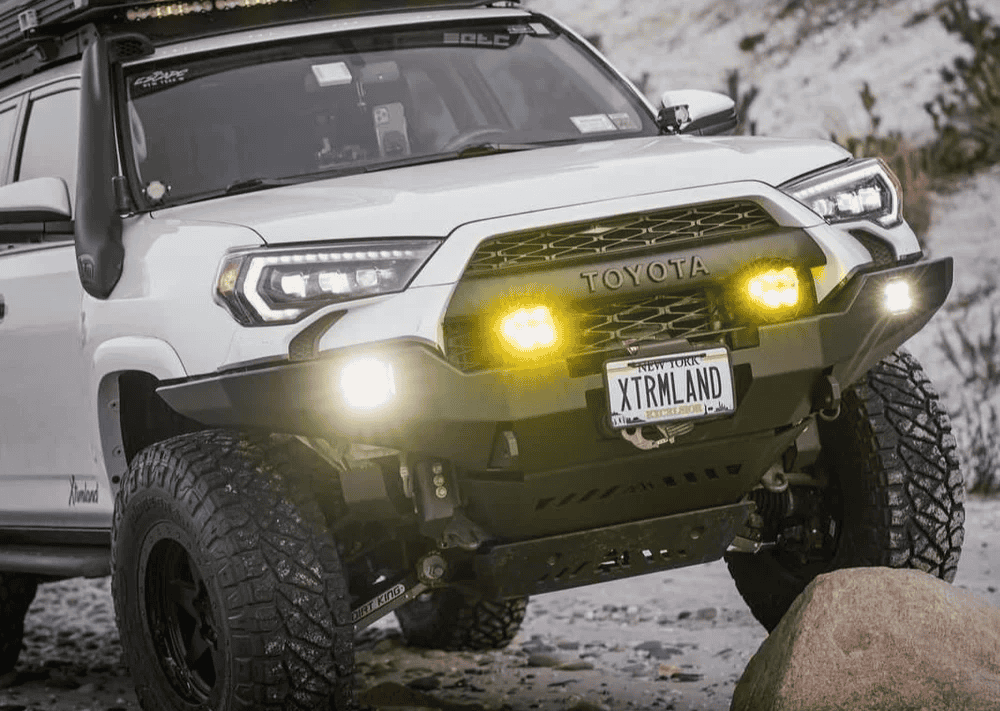Overland Vehicles

A strong build starts with a truck that matches your terrain, payload needs, and travel distance. Consider factory tow rating, frame strength, axle ratings, gear ratios, and the parts ecosystem for your chassis. Full size platforms offer room and payload but can be wide for tight trails. Midsize platforms slip through narrow forest roads but often demand stricter weight discipline. Diesel provides range and torque at the cost of service complexity while gas power offers simpler maintenance and quick parts availability. The key is not brand loyalty but selecting a truck that can safely carry your final weight with margin.
Tires define grip, clearance, and comfort on dirt. Select an all terrain or hybrid tread with strong sidewalls and a load rating that matches your final weight. Upsizing diameter modestly can add clearance without overtaxing brakes and gears. Suspension upgrades should carry weight first, then add travel. Choose springs and shocks valved for your payload, not empty curb weight. Aim for balanced front and rear rates to maintain stable braking and predictable handling when loaded.
Capability is only as useful as your ability to return home. Start under the truck with skid plates for the engine, transmission, and transfer case. Add rock sliders that can hold vehicle weight. Consider a front bumper with recovery points and a winch sized near the gross weight. In the rear, a bumper with tied in recovery points and high clearance corners pays off in ruts and ledges. Locking differentials or a quality limited slip can transform low speed traction in loose terrain.
A recovery kit is an insurance policy. Pack rated soft shackles, a tree saver, winch line extension, and a kinetic rope matched to vehicle mass. Add traction boards and a shovel for self recovery on sand or snow. Mount a full size spare where it is accessible and secure. Keep a jack that works off road and a base plate for soft ground. Practice safe rigging at home so you can stay calm when you need it most.
Long travel requires dependable power and water. A dual battery system or lithium house battery bank with a charge controller keeps fridges and lights running without stranding the starter battery. Solar adds steady charge on sunny days while an alternator charger tops the system during transit. For water, use a fixed tank with a filtration step or a pair of modular containers to simplify refills and balance weight. Cooking can be a compact propane stove or a diesel cooktop paired with a vented space heater for cold climates.
Weight is the invisible opponent in every build. Heavy accessories high on the truck raise the center of gravity and hurt handling. Use modular drawer systems and tie down tracks to keep gear low and locked. Pack by function so recovery, medical, and kitchen kits are ready without digging. Weigh your truck after major changes and verify alignment and brake performance with the new load. The goal is a quiet, rattle free cabin and a bed setup that works in the dark and in the rain.
Good lighting is about beam pattern and control. A quality set of fogs for bad weather, a wide cornering beam for tight trails, and a modest spot for long sight lines cover most needs. Avoid lighting overload that creates glare or eye strain. For navigation, offline maps and a reliable GPS unit reduce reliance on cell service. Add a handheld satellite messenger for check ins and emergency use. In hilly or forested terrain, a simple radio adds clear vehicle to vehicle communication without data coverage.
Wire critical devices through fused power distribution and label everything. Protect wiring with abrasion resistant loom and proper grommets at every pass through. Keep a basic electrical kit with fuses, connectors, and tools. Maintain a pre trip checklist covering tire pressures, fluids, torque on suspension hardware, and winch function. A disciplined prep routine prevents small issues from becoming trip ending problems.
A thoughtful plan beats impulse upgrades. Sketch your final layout and work in stages, validating each step on short shakedown trips. Real field time will reveal what earns a permanent spot and what does not. The best builds feel simple and calm inside, even when the road gets rough.
When you are ready to turn a plan into a finished rig, a professional upfit brings everything together under one roof. Explore overland rigs to see how complete systems transform capability and comfort. If you want tailored suspension, armor, and integrated power and water, review our custom overland upfit approach to map the right sequence. Learn more about our process and standards on why choose OZK and start your route to a dialed setup.
Ready to hit dirt without compromise. Share your travel style, crew size, and timeline, and OZK Customs will design and build an overland truck that tracks straight, carries its weight, and stays comfortable off grid. From platform selection and payload math to tuned suspension, armor, recovery, power, water, and lighting, we build systems that work together from day one. Fill out the form so we can scope your build and deliver a truck that feels confident the first time you turn off pavement.
Ready to skip guesswork and get a proven overland build that fits your travel style. Talk with OZK Customs to plan a complete overland upfit, dial your suspension and armor, and integrate power and water systems that just work. Share your goals and timeline, and we will map a build path that gets you from driveway to dirt with confidence.
ADDRESS:
6159 E Huntsville Rd, Fayetteville, AR 72701
PHONE:
(479) 326-9200
EMAIL:
info@ozkvans.com